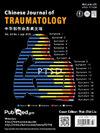二甲基氧基酰甘氨酸通过抑制细胞凋亡和增强血脊髓屏障修复促进脊髓损伤后的功能恢复。
IF 1.9
4区 医学
Q2 ORTHOPEDICS
引用次数: 0
摘要
目的:脊髓损伤(SCI)的继发性损伤从血脊髓屏障(BSCB)的崩溃到慢性和毁灭性的神经功能缺损。因此,保持BSCB的完整性和通透性被认为是促进脊髓损伤后功能恢复的主要治疗方法之一。先前的研究表明,缺氧诱导因子-1α (HIF-1α)的激活在脊髓损伤中具有抗细胞凋亡和神经保护作用。内源性HIF-1α被脯氨酸羟化酶迅速降解,不足以促进功能恢复。二甲基氧基酰甘氨酸(DMOG)是一种高选择性脯氨酸羟化酶抑制剂,据报道对轴突再生有积极作用。然而,DMOG在BSCB恢复中的作用和潜在机制尚不清楚。本实验旨在观察DOMG治疗大鼠脊髓损伤后BSCB恢复的病理变化,并评价DMOG的治疗效果。方法:研究时间为2022 ~ 2023年。本研究采用Allen’s冲击模型和人脐静脉内皮细胞,探讨DMOG的作用机制。在表型验证实验中,将大鼠随机分为3组:sham组、SCI组、SCI + DMOG组,每组10只。通过尼氏染色、Basso-Beattie-Bresnahan评分和足迹分析评估脊髓损伤后的功能恢复情况。Western blotting、TUNEL法和免疫荧光染色检测BSCB紧密连接和粘附连接、HIF-1α、细胞凋亡和内质网(ER)应激水平。采用单因素方差分析进行统计分析。结果:在本研究中,我们观察到HIF-1α在脊髓损伤模型中的表达降低。DMOG治疗显著提高HIF-1α水平,减轻内皮细胞凋亡和BSCB破坏,促进脊髓损伤后功能恢复。此外,DMOG可以抵消脊髓损伤引起的内质网应激激活,但这种现象被内质网应激激活剂脲霉素阻断。最后,我们发现DMOG通过抑制内质网应激维持BSCB的完整性和通透性,抑制HIF-1α消除了DMOG的保护作用。结论:我们的研究结果表明,DMOG可以减轻BSCB的破坏和hif -1α-诱导的ER应激抑制。本文章由计算机程序翻译,如有差异,请以英文原文为准。
Dimethyloxalylglycine improves functional recovery through inhibiting cell apoptosis and enhancing blood-spinal cord barrier repair after spinal cord injury
Purpose
The secondary damage of spinal cord injury (SCI) starts from the collapse of the blood spinal cord barrier (BSCB) to chronic and devastating neurological deficits. Thereby, the retention of the integrity and permeability of BSCB is well-recognized as one of the major therapies to promote functional recovery after SCI. Previous studies have demonstrated that activation of hypoxia inducible factor-1α (HIF-1α) provides anti-apoptosis and neuroprotection in SCI. Endogenous HIF-1α, rapidly degraded by prolylhydroxylase, is insufficient for promoting functional recovery. Dimethyloxalylglycine (DMOG), a highly selective inhibitor of prolylhydroxylase, has been reported to have a positive effect on axon regeneration. However, the roles and underlying mechanisms of DMOG in BSCB restoration remain unclear. Herein, we aim to investigate pathological changes of BSCB restoration in rats with SCI treated by DOMG and evaluate the therapeutic effects of DMOG.
Methods
The work was performed from 2022 to 2023. In this study, Allen's impact model and human umbilical vein endothelial cells were employed to explore the mechanism of DMOG. In the phenotypic validation experiment, the rats were randomly divided into 3 groups: sham group, SCI group, and SCI + DMOG group (10 rats for each). Histological analysis via Nissl staining, Basso-Beattie-Bresnahan scale, and footprint analysis was used to evaluate the functional recovery after SCI. Western blotting, TUNEL assay, and immunofluorescence staining were employed to exhibit levels of tight junction and adhesion junction of BSCB, HIF-1α, cell apoptosis, and endoplasmic reticulum (ER) stress. The one-way ANOVA test was used for statistical analysis. The difference was considered statistically significant at p < 0.05.
Results
In this study, we observed the expression of HIF-1α reduced in the SCI model. DMOG treatment remarkably augmented HIF-1α level, alleviated endothelial cells apoptosis and disruption of BSCB, and enhanced functional recovery post-SCI. Besides, the administration of DMOG offset the activation of ER stress induced by SCI, but this phenomenon was blocked by tunicamycin (an ER stress activator). Finally, we disclosed that DMOG maintained the integrity and permeability of BSCB by inhibiting ER stress, and inhibition of HIF-1α erased the protection from DMOG.
Conclusions
Our findings illustrate that the administration of DMOG alleviates the devastation of BSCB and HIF-1α-induced inhibition of ER stress.
求助全文
通过发布文献求助,成功后即可免费获取论文全文。
去求助
来源期刊

Chinese Journal of Traumatology
ORTHOPEDICS-
CiteScore
3.80
自引率
4.80%
发文量
1707
审稿时长
28 weeks
期刊介绍:
Chinese Journal of Traumatology (CJT, ISSN 1008-1275) was launched in 1998 and is a peer-reviewed English journal authorized by Chinese Association of Trauma, Chinese Medical Association. It is multidisciplinary and designed to provide the most current and relevant information for both the clinical and basic research in the field of traumatic medicine. CJT primarily publishes expert forums, original papers, case reports and so on. Topics cover trauma system and management, surgical procedures, acute care, rehabilitation, post-traumatic complications, translational medicine, traffic medicine and other related areas. The journal especially emphasizes clinical application, technique, surgical video, guideline, recommendations for more effective surgical approaches.
 求助内容:
求助内容: 应助结果提醒方式:
应助结果提醒方式:


